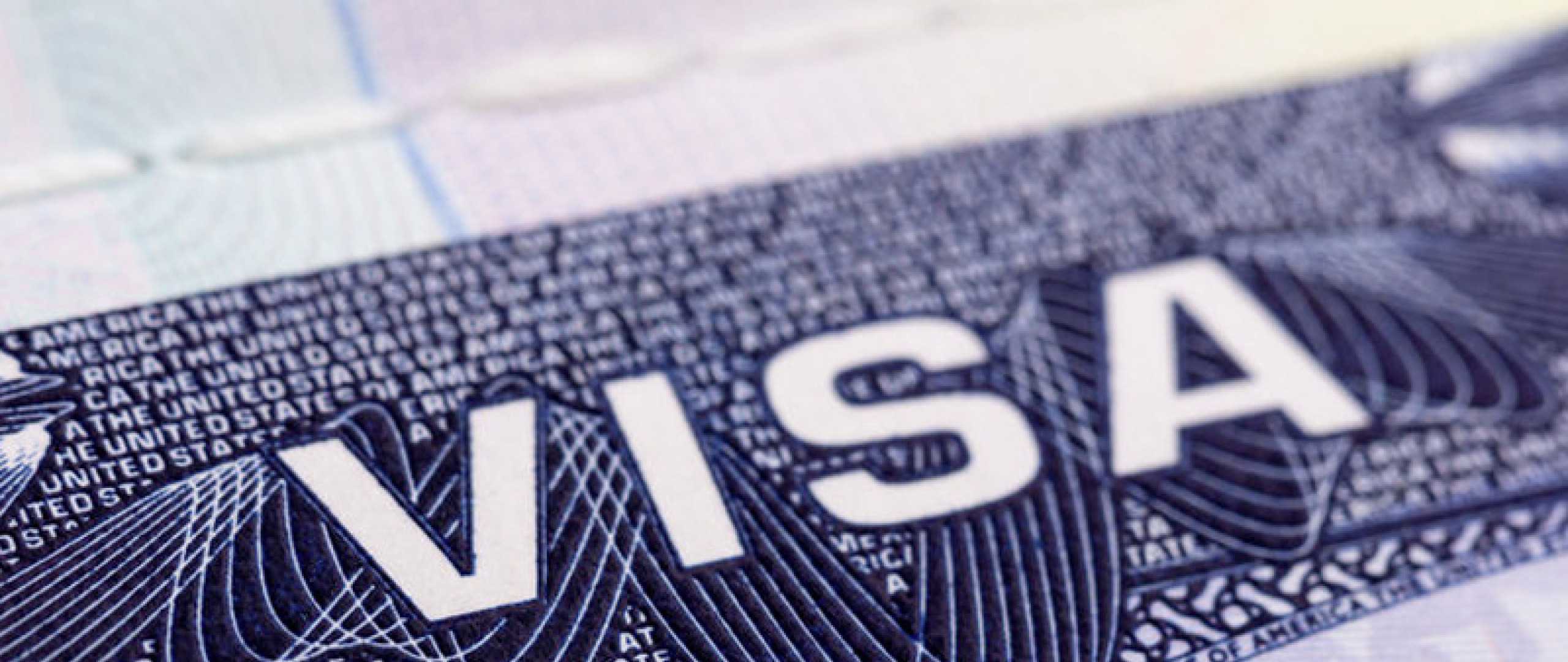The US market offers great opportunities for European companies, but also requires careful planning and preparation. This guide shows the most important steps for a successful market entry, from market analysis and the legal framework to US visas and work permits.
The United States of America offers a robust and dynamic economic environment that provides foreign companies with diverse growth opportunities and access to a huge sales market. The liberal trade policy, combined with a strong legal framework and a pronounced culture of innovation, makes the USA an attractive investment destination. Its strategic geographical location also provides access to other markets such as Canada and Mexico, making the USA an ideal starting point for international expansion.
With a well-thought-out strategy and careful implementation, European and international companies can successfully expand into the US market and benefit from the many opportunities it offers. Long-term success requires companies to remain flexible and continuously adapt to changing market conditions.

The US market offers immense opportunities for European and international companies. With a strong economy, a large consumer market and innovative business opportunities, the move across the Atlantic is an attractive option for companies looking to go international.
Before companies venture into the US market, a thorough market entry analysis is essential. A detailed analysis helps to weigh up the opportunities and risks and make an informed decision about entering the market. It lays the foundation for all further steps and ensures that your company is well prepared for internationalization.
This analysis should include the following points:
The United States is a heterogeneous market with a diverse population structure. It is important to understand the demographic characteristics, purchasing behavior and cultural differences of the target groups. Regional differences also play a role, as consumer habits and preferences can vary from state to state.
Use target group analyses to determine whether there may be changes for your product in the United States, as your target group differs from the European market due to different structures, cultures and needs.
Who are the potential customers? What are their needs and preferences?
A close examination of your competitors, their strengths and weaknesses and their market strategies will give you an insight into how you can differentiate yourself as a company and gain a competitive advantage. Learn to understand what makes the US market and the industry within your product or service tick and how it differs from the European market.
Who are the main players in the market? How are they positioning themselves and what market shares do they hold?
Trends such as digitalization, sustainability and changing consumer preferences offer numerous opportunities for innovation and differentiation. Analyzing industry reports and market studies can also provide valuable insights. USA service providers such as TBIC regularly provide market analyses for interested companies.
What trends can be identified and which segments of the market are growing particularly fast?
The choice of location within the USA is a decisive factor for business success for international companies. Careful site selection can have a significant impact on a company's economic performance and growth. But which site in the United States offers the best conditions for your business success? You are spoiled for choice here between 50 states with absolutely different location conditions.
So how should you decide on the right location for the new company? Factors such as government incentives and support programs, the availability of qualified specialists, infrastructure and logistical advantages play a key role here.

For many years, the US Visa Service has been a member of the TBIC - Transatlantic Business & Investment Council and thus part of an extensive international network. As the leading representative of North American business development organizations in Europe, the TBIC aims to promote transatlantic trade and investment.
The international members of the TBIC include various representatives from over 100 US regions, who, as a network, support European investors in finding suitable US sites for their business activities and facilitate their access to the US market.


Every legal form has its advantages and disadvantages in terms of liability, taxation and administration. But which legal form suits which company? LLC (Limited Liability Company), corporation (C-Corp or S-Corp) or partnership?
For example, an LLC offers flexibility and limited liability, while a corporation may be better suited for larger businesses with third-party investors. Another simple form is sole proprietorship, where a single person can register in the local community by name. Companies made up of more than one person can also form a partnership, each investing capital and skills and being liable for profits and losses.
Company registration is the first official step on the way to a successful market entry in the USA. This process is regulated at the individual state level, which is why it is important to select the right site carefully. Once you have determined the appropriate state and legal form for your company, you must prepare and submit the appropriate incorporation documents. For a corporation, this is the certificate of incorporation, while for an LLC, the certificate of formation must be submitted.
These documents are usually uncomplicated to prepare and often range from one to a few pages. The filing fees vary depending on the state and are usually between 100 and 800 US dollars.
Despite the simplicity of the process, it is advisable to seek the assistance of an experienced lawyer or tax advisor to ensure that all legal requirements are met correctly. Once the incorporation documents have been submitted and approved, your US company officially exists and you can proceed with the next necessary steps. Professional advice is essential to ensure the process is efficient and legally compliant and to avoid potential pitfalls.
After successfully registering your company, the next essential step is to register with the tax authorities. This process includes both the federal and state levels. Every business in the US is required to register with the IRS to ensure that all tax obligations are met. Generally, registration is done with the Internal Revenue Service (IRS) at the federal level and with the respective tax authorities of the states in which the company operates. You will need to fill out specific forms, which may vary depending on the state and company structure.
A thorough knowledge of the tax requirements and deadlines is crucial to avoid legal problems and financial penalties. It is advisable to go through this process with the assistance of attorneys who are familiar with US tax laws and incorporation of foreign companies in the US. They can help to fill out the necessary forms correctly and ensure that the company fulfills all tax obligations.
Careful planning and timely registration with the tax authorities will ensure that your company can operate smoothly and that no unexpected tax hurdles arise.
Applying for an Employer Identification Number (EIN) is a further step after registering your company. The EIN, also known as a Federal Tax Identification Number, is issued by the Internal Revenue Service (IRS) and is used to uniquely identify your business for tax purposes. It is required to open a bank account, file tax returns, hire employees and conduct other business activities.
To apply for an EIN, you must fill out form SS-4 online and submit it to the IRS. This form requires basic information about your business, including legal form, date of incorporation, business purpose, and contact information. It is important that the information in the application is accurate and complete to avoid delays. The EIN application is free and can be completed in a few minutes.
The EIN is not only essential for fulfilling tax obligations, but also for day-to-day business operations. It facilitates the processing of financial transactions, the hiring of staff and the fulfillment of legal requirements. Therefore, applying for an EIN should be done promptly after incorporation to ensure the seamless operation of your business. With an EIN, your company is officially registered and ready to meet all tax and legal requirements associated with operating in the US.

When it comes to deciding which visa is suitable for management and employees, there are several options for work visas. The E-2 investor visa is aimed at individuals who make significant capital investments in the USA or their employees. In contrast, the E-1 visa allows those who conduct extensive trade between the USA and their home country to an stay in the United States. The L-1 visa is suitable for the intracompany transfer of executives or specialists, while the H-1B visa is intended for highly qualified workers.
It is important to note that the visa process in the USA is often time-consuming. It is therefore essential to start planning the application for US visas for employees 6 to 12 months in advance, depending on the visa category, in order to avoid possible delays.
The visa procedure can be complex and time-consuming. Thorough preparation and the collection of all necessary documents, such as business plans, financial statements and employment agreements, are essential. In addition, companies should deal with the visa requirements early on when planning their expansion or founding a company in the USA.
We therefore strongly recommend that you seek advice from our team of experts or experienced immigration lawyers in order to avoid a visa refusal as well as further costs and delays.
In addition to the US visa, employees may need other permits, such as work permits and social security cards. It is important to find out about the specific requirements and take all the necessary steps in good time.
Timely and careful planning of visa and approval procedures is essential to avoid delays and legal problems. A proactive approach and collaboration with immigration law professionals can greatly simplify the process.
Please note that not every employee automatically qualifies for every US visa; nationality, qualifications and length of service play a significant role in some US visa categories.

The United States has a complex tax system consisting of federal, state and local taxes. Businesses need to familiarize themselves with different tax rates and regulations at these levels. The federal corporate income tax rate is currently 21%, while state tax rates can vary significantly. Some US states such as Nevada and South Dakota do not levy corporate income tax, while others such as California and New York have higher rates. It is important to understand the tax obligations and benefits of each level in order to develop an optimal tax strategy.

The US offers a variety of tax incentives and reductions that can be particularly attractive to new companies. These incentives include tax credits for research and development, investment grants and special programs for economic development in structurally weak regions. As a start-up company, take a closer look at the possibilities of tax incentives to minimize the financial burden and maximize profitability. One example is the Opportunity Zone Program, which promotes investment in economically disadvantaged areas.
Employment law in the USA is characterized by a high degree of flexibility and diversity, which is based on the different legal frameworks of the individual states. The basic labor law principles and regulations can vary considerably depending on the region. Detailed knowledge of the respective laws is therefore essential in order to avoid legal problems and ensure fair working conditions.
In the US, many employment relationships are governed by individual employment contracts. These contracts set out the specific terms of employment, including salary, hours, vacation entitlement and other benefits. Since there is no uniform federal employment law, these terms can vary significantly depending on the legal requirements of the state in question and the individual agreements between employers and employees.
A central principle of American labor law is "at-will employment". This principle allows employers to dismiss employees at any time and without giving reasons, as long as there are no discriminatory, unlawful motives or contractual notice periods. Employees can also resign without notice, which offers a high degree of flexibility in employment.
Working time regulations in the USA are highly varying and can differ from state to state. While the Fair Labor Standards Act (FLSA) sets minimum standards for working hours and overtime pay, such as mandatory overtime compensation at a higher rate once a certain number of hours are worked per week, additional regulations may apply at state level. These may relate to aspects such as maximum daily or weekly working hours and break regulations.
The minimum wage law in the USA is also regulated at state level, but here too there are differences. The federal minimum wage is regularly adjusted, but many states and cities have set higher minimum wages. Employers must comply with the applicable minimum wage, which can vary from region to region.
Annual leave in the USA is largely negotiable and is usually negotiated individually between employers and employees. There are no uniform federal requirements for paid vacation here; instead, many companies set their own policies. Public holidays can also be treated differently depending on the state, with employers often deciding whether to work on these days or grant employees time off.
Discrimination in the workplace is protected in the USA by various federal laws, such as
These laws prohibit discrimination on the basis of ethnic background, gender, age, disability and other protected characteristics. The Equal Employment Opportunity Commission (EEOC) is the competent authority that investigates and enforces complaints of discrimination.
We advise you on the choice of the appropriate visa category and take over the complete processing for you or your company.

The US work culture differs from business practices and ethics in Germany, Europe and the world, and dealing with it requires cultural sensitivity. Understanding and adapting to these cultural differences will promote positive business relationships and the long-term success of your company.
The corporate culture in the US is strongly characterized by competition and performance orientation; professional growth and a competitive spirit are strongly emphasized. American employees place a high value on initiative and are often willing to work overtime to advance their careers. This "can-do" attitude is expected and encouraged by employers. At the same time, American employees often expect quick decisions and clear instructions. Managers need to be flexible and adapt their management styles to the expectations and working methods of their teams.
In contrast, the German work culture, for example, often emphasizes efficiency and precision, although there is an increasing focus on work-life balance and the well-being of employees, with shorter working hours and more vacations placing greater emphasis on a good work-life balance.
Different perceptions of working hours and work-life balance can influence employee motivation and satisfaction. In the US and Germany, more flexible working hours and working from home have been widespread since the pandemic and are not only seen as an advantage, but as a prerequisite.
Meetings and communication styles also differ. In the US, meetings are often short and goal-oriented, with a strong focus on decision-making and immediate implementation. In Germany, on the other hand, meetings can be longer and more thorough, with a focus on detailed discussion and consensus building. These cultural differences can cause misunderstandings and communication problems if they are not consciously addressed and managed.
In the USA and Germany, for example, state support for families differs considerably, particularly in the areas of childcare, parental leave and child benefit.
The cost of childcare in the USA is high and varies greatly depending on the region. According to Child Care Aware of America, the average annual cost of caring for an infant in a daycare center is around 10,000 US dollars. In some states, such as Massachusetts, the cost can even exceed 20,000 US dollars per year.
In Germany, on the other hand, the costs are significantly lower thanks to state subsidies, and parents are entitled to a place in a daycare center from their child's first year. The fees for a place at a daycare center average around 150 to 400 euros per month, depending on the parents' income and the federal state.

The USA does not offer legally guaranteed, paid parental leave. The Family and Medical Leave Act (FMLA) grants up to 12 weeks of unpaid parental leave for qualified employees.
In contrast, parents in Germany are entitled to 14 months of paid parental leave, which can be split between both parents. This is remunerated with up to 67% of net income.
In Germany, families receive child benefit, which is paid monthly per child. Since 2024, child benefit for each child has amounted to a uniform 250 euros per month.
In the USA, there is the child tax credit, which amounts to up to 2,000 US dollars per child in 2023, but is dependent on the parents' income.
Wir und unsere Partner nutzen Cookies, um personenbezogene Daten wie z.B. Browsing-Daten zu speichern und abzurufen, um z.B. Inhalte und Werbung bereitzustellen und zu personalisieren sowie die Verwendung der Website zu analysieren und das Benutzererlebnis zu verbessern. Sie erfahren mehr über die Zwecke, für welche wir und unsere Partner Cookies einsetzen, wenn Sie unten auf den Button „Cookie Einstellungen“ klicken. Hier können sämtliche Einstellungen auch geändert werden. Nachträglich kann man jederzeit seine Cookie-Auswahl überdenken oder seine Einwilligung widerrufen, indem man auf den Link zu den Cookie-Einstellungen im Footer unserer Webseite klickt. Beachten Sie bitte, dass das Blockieren einiger Cookie-Typen unsere Möglichkeiten zur Bereitstellung von auf Ihre Interessen zugeschnittenen Inhalten haben kann oder einige Funktionen der Webseite nur eingeschränkt zur Verfügung stehen.
Durch klicken auf “Alle Cookies akzeptieren” stimmen Sie unserer Nutzung und der Weitergabe Ihrer Daten an unsere Partner zu.